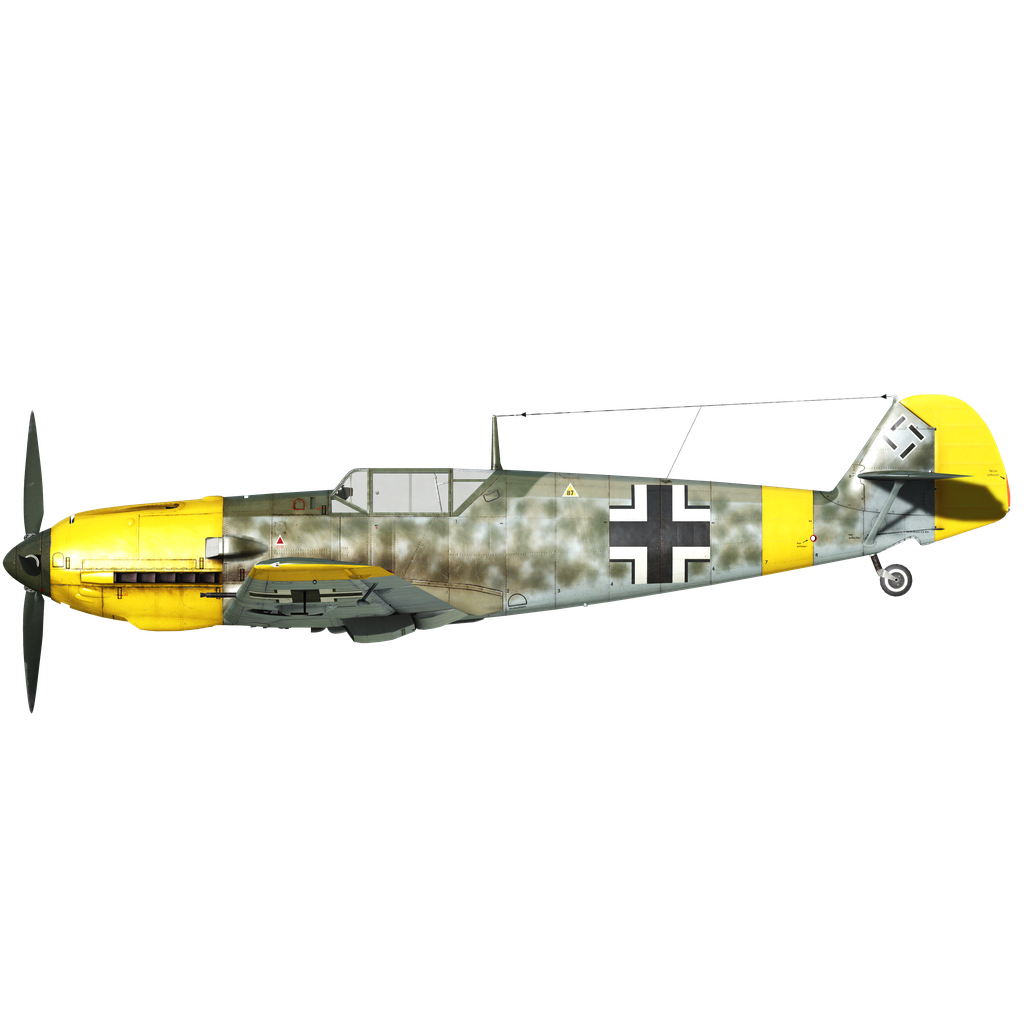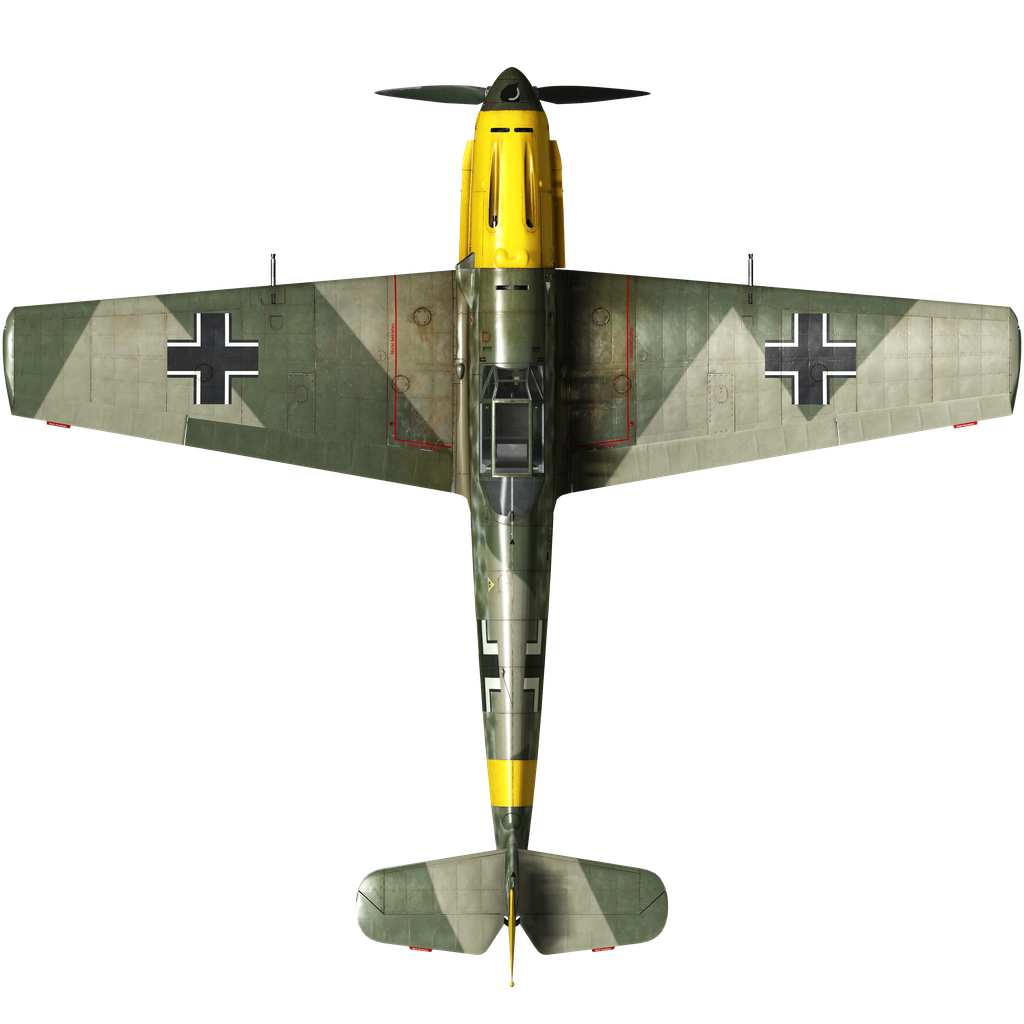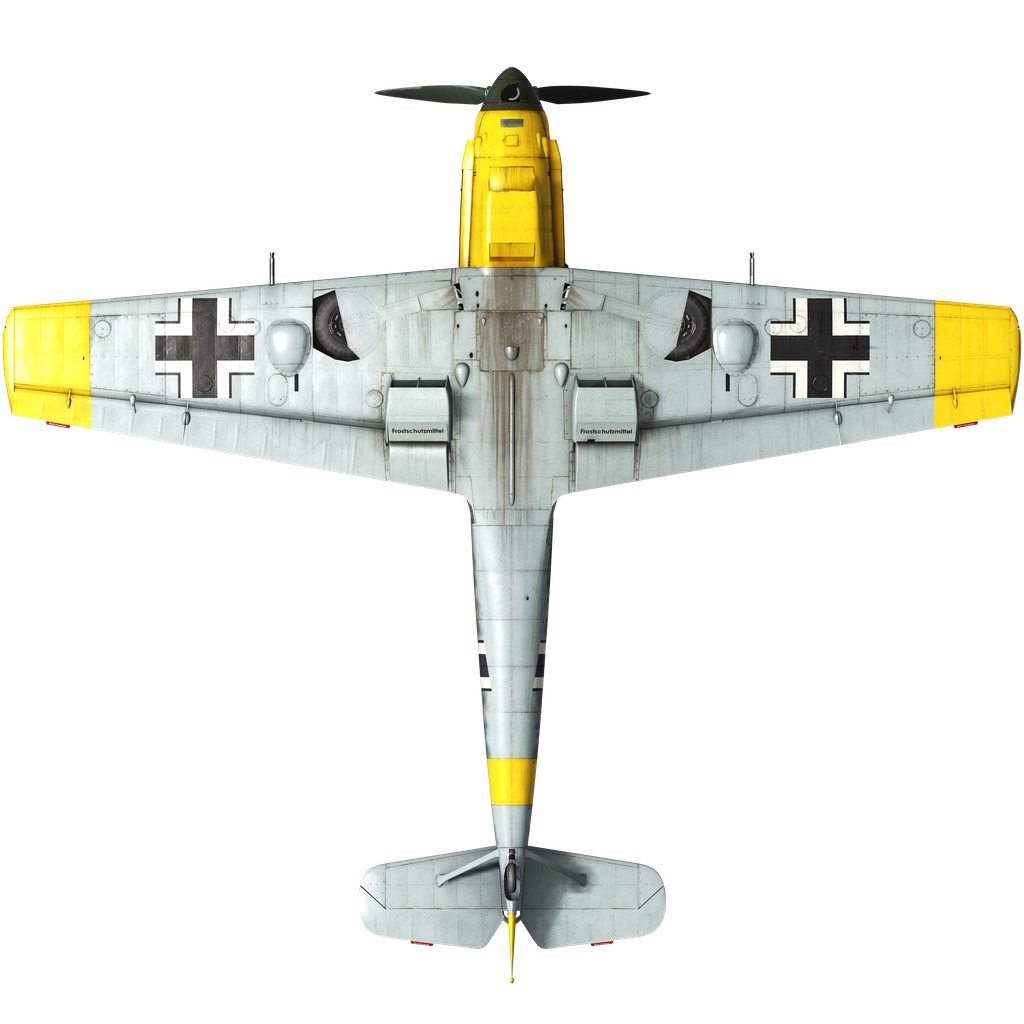The Messerschmitt Bf 109, the most mass-produced fighter of Hitler's Germany, appeared in 1934 in response to the Luftwaffe's request for the latest single-engine monoplane fighter. It was an all-metal low-wing aircraft with a water-cooled engine, retractable landing gear, and a tail wheel. The prototype's first flight took place on May 28, 1935, and in November 1936, the first aircraft were sent for military testing in Spain, where a civil war was raging. This decision was due to the failure of the He 51 biplanes, which were losing air battles to Soviet fighters. The Spanish debut ended successfully for the plane, mainly due to the continuous improvements made based on the experience of use in combat. From 1936 to 1938, 5 models were built — from the Bf 109 A "Anton" to the Bf 109 E "Emil" — and this latter model became the main machine in service with fighter squadrons at the beginning of the Second World War. Emil prototypes started flying in the summer of 1938, and the first production Bf 109 E-1 was delivered to the Luftwaffe in January 1939. The fighter was mass-produced and constantly modernized by various companies from the beginning of the war.
In the early fall of 1940, the Bf 109 E-7 with the DB601N engine and a takeoff power of 1215 hp began to roll off the assembly lines. It differed from the previous modifications in that it could be equipped with a 250 kg bomb or a 300-liter tank suspended from the ETC 500 universal mount under the fuselage. The use of a drop tank increased the range, which was insufficient. Externally, the aircraft of this modification were distinguished by a pointed propeller cowl, and some of them were equipped with armored glass in the front part of the canopy.
The armament of the aircraft remained the same as on the previous modifications and consisted of two synchronized 7.92 mm machine guns in the fuselage and two 20 mm "Oerlikon" MG/FF cannons in the wing. The placement of the cannon magazine in the wing of the Messerschmitt necessitated the installation of convex fairings on the underside of the wing, to the detriment of its aerodynamics.
The Bf 109 E-7/U2 attack variant was characterized by the presence of 5mm armor plates under the oil cooler and fuel pumps to protect it from ground fire.
Specially prepared for operation in hot climates, the Bf 109 E-7/Trop variants were delivered to fighter units fighting in the Mediterranean theater. In addition to a sand filter mounted at the inlet of the engine fan, these aircraft were equipped with a special emergency kit and an attachment for an umbrella to cover the cockpit. After take-off, the pilot would open the flap and the air to the compressor would be bypassed to prevent loss of engine power due to air intake through the filter.
The Bf 109 E-7/Z (80 units produced) was the first to use the GM-1 nitrous oxide injection boost system, which helped increase the fighter's ceiling, speed, and rate of climb at high altitudes. In a report on the tests of a Bf 109 E-7/Z dated December 8, 1940, the following results were stated: in the altitude range from 8000 to 11000 m, the speed of the fighter with the GM-1 system enabled increased by 60-105 km/h, and the rate of climb by 2-3 m/s, which is very significant for high altitudes. Although the GM-1 boost system proved effective and was used in many subsequent modifications of the Bf 109, its use was accompanied by an increase in the aircraft's flight weight and a decrease in its performance at low altitudes, where the system did not provide any performance improvement.
A total of 438 (other reports say 750) Bf 109E-7s were built.
From 1939, the Bf 109 E showed a clear superiority over its main rivals in aerial combat. One ace who started his career with the Bf 109 E was the famous Adolf Galland. The highlight of the Emil's career was its participation in the Battle of Britain. However, its not very successful actions in this operation became one of the reasons for stopping the production of this model. Instead of it a new variant, the Bf 109 F, came into service. The last major operation in which the Luftwaffe's Emils participated was the attack on the USSR, but by 1942 they had practically disappeared from German units on the Eastern Front, remaining in service with the air forces of Spain, Switzerland, Hungary, Bulgaria, and Slovakia.
Sources used:
1. W. Creen "The Warplanes of the Third Reich", Galahad Books, 1986
2. "Wings of the Luftwaffe" Translation of W. Creen's book "Combat Airplanes of the Third Reich" by A. Firsov, 1993.
3. "Yak-1,7,9,3/ Bf 109 fighters" Journal of Aviation and Cosmonautics, 5-6, 1999.
4. Materials of the site airwar.ru






